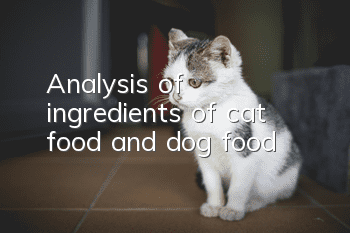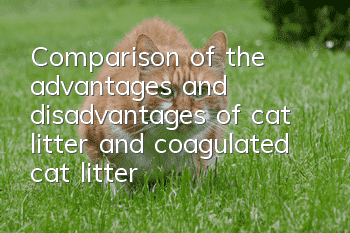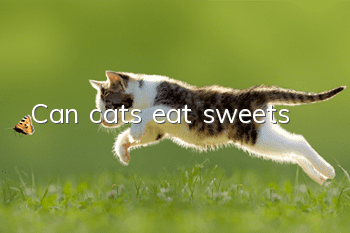Analysis of ingredients of cat food and dog food

Generally, when buying pet food, in addition to brand and price, most pet food owners will start with the taste when choosing for their cats and dogs. However, the flavors are diverse, such as beef or salmon, but there are actually added ingredients in them. Beef or salmon? Or is this just "flavor"? How to distinguish between choices? How can we easily understand the ingredients?
The eating habits and needs of cats and dogs are very different. This is because dogs are omnivores and have sharp teeth for tearing and grinding food with their molars; while cats use their sharp teeth to kill rodents and other animals. Finally, bite it off and swallow it. Because it is a carnivorous animal, eating a vegetarian diet will cause harm to the body.
Cats and dogs have different body needs, so their protein intake is also different. For example, puppies need three times more protein than adult dogs, while kittens only need 50% more protein than adult cats.
Analysis of ingredients in cat food and dog food
In fact, you can get a glimpse of it from the ingredients in the packaging! Basically, the earlier in the ingredient list, the higher the content. This is the fastest way to identify it. The following are the definitions listed by AAFCO (American Association of Animal Feed Controllers) for common meat and related products:
Meat
Clean and fresh muscles from animals, including their attached skin, tendons, fat, nerves and blood vessels.
Meat Meal
Animal tissues that have been oiled and dried, but do not include blood, hair, hooves, horns, stomach and rumen contents, skin residue and feces, etc., and their calcium to phosphorus specific gravity, protein, etc. must comply with the requirements for pet food Manufacturing Standards.
Meat and Bone Meal
Similar to the definition of meat meal, excluding parts that should not be included, and animal tissues that have been pressed for oil and dried with bones.
Meat By-products
Isolate parts other than unextracted oil and meat from animals, including lungs, spleen, kidneys, brain, liver, blood, bones, partially de-fatted low-temperature adipose tissue, and gastrointestinal tract (removal of contents). Does not contain hair, hooves, horns or teeth.
Poultry
A mixture of poultry meat and skin, which may include bones, except feathers, heads, feet and internal organs.
Poultry meal Poultry Meal
The source of the same poultry meat, but the difference is that it is dried poultry powder that has gone through the oil extraction process.
Poultry By-products
It must come from the unextracted heads, feet and internal organs of poultry animals, but it must not contain feces, feathers and other foreign objects.
Ash content
In fact, it is not a type of ingredient, but the part that cannot be burned after complete combustion of cat food and dog food is called it, which represents the mineral content. Therefore, low ash content means easier control of stones.
If the source is good, there is no need to deliberately exclude minced meat and meat powder
Some people think that dry food containing minced meat and meat meal is inferior. In fact, according to the definition of AAFCO (Association of American Feed Control Officials) (classified as above), meat meal is mainly made from mammals. It is made of dried muscle tissue and may contain some animal organs and bones around the meat. As long as the source of meat meal or fresh meat is of good quality, it does not matter whether the dry feed contains fresh meat, meat meal or both. The most important thing is whether you provide your dog and cat with a complete meal.
As for animal by-product powder, animal by-product is a product derived from mammalian tissue. It also does not include any additional blood, hair, hooves, horns, and rawhide scraps (mainly scraps produced in the leather manufacturing process, rawhide is used After lime and other processes such as degreasing, hair removal and chrome tanning, it will turn blue, also called blue leather or blue vitriol leather. The scraps of leather trimmed from the entire animal skin are "fur edge leather", or are used to produce Leather products such as leather shoes, leather clothing, belts, etc., and the cut off fragments are called rawhide scraps.), feces and stomach, and other non-defined foreign matter cannot be added.
Animal by-product powder is usually made by extracting the remaining parts of people's edible parts, such as meat scraps, bone trimmings, etc., and processing and drying them. The quality of the products varies greatly depending on the source. Animal by-product meal from good quality sources is quite close to the quality of meat meal, so feeds that add animal by-products are not necessarily bad, it still depends on their quality.
- What should I do if my American shorthair cat has fleas?
- Why do cats keep opening their mouths and sticking out their tongues?
- British Shorthair female cat gill hair process
- What does it mean when a cat gently bites your hand?
- How to stop cats from scratching and biting?
- Why do Persian cats shed tears? Do you know the reasons?
- I regret owning a Bengal leopard cat
- What should I do if my cat doesn’t sleep at night? You can easily solve it by learning this trick!
- Can pregnant cats eat catnip?
- How to differentiate between cat nasal congestion and cat cold?



